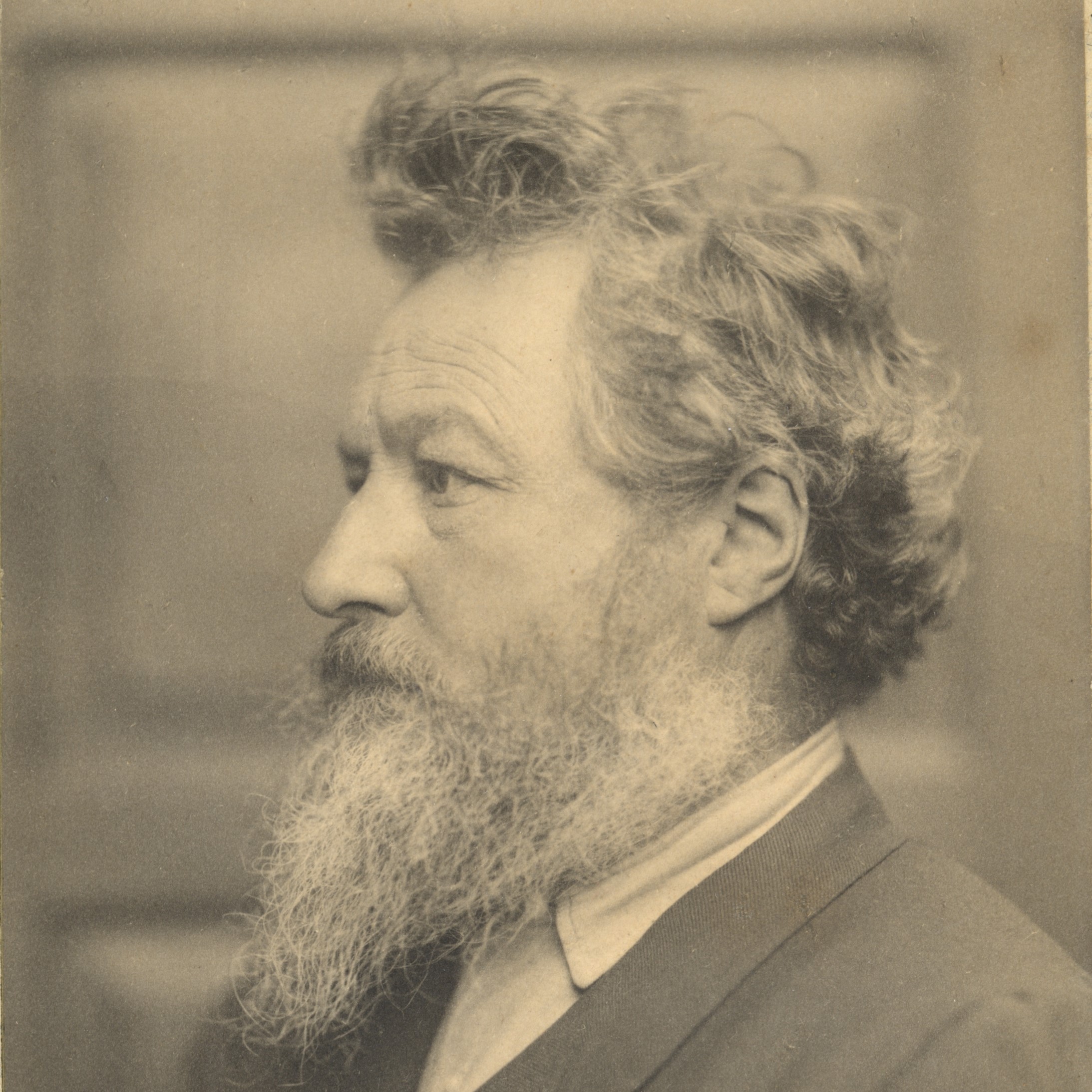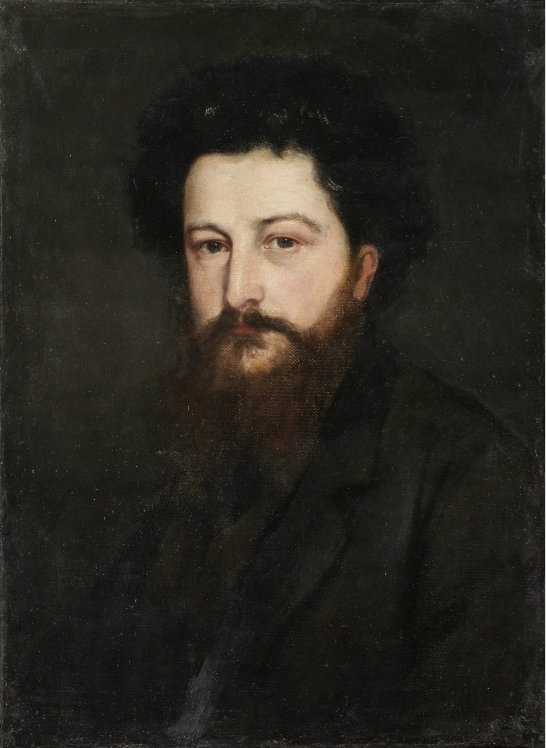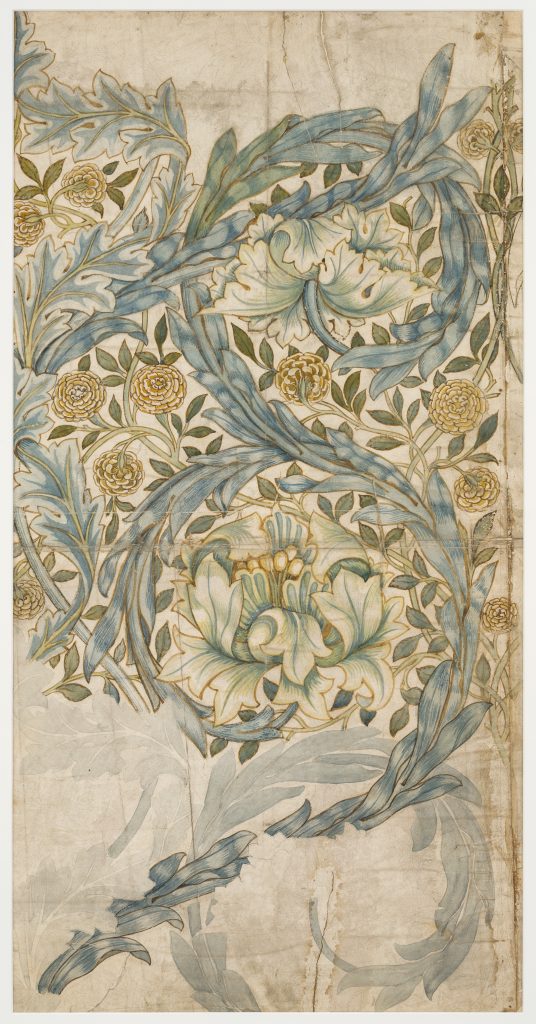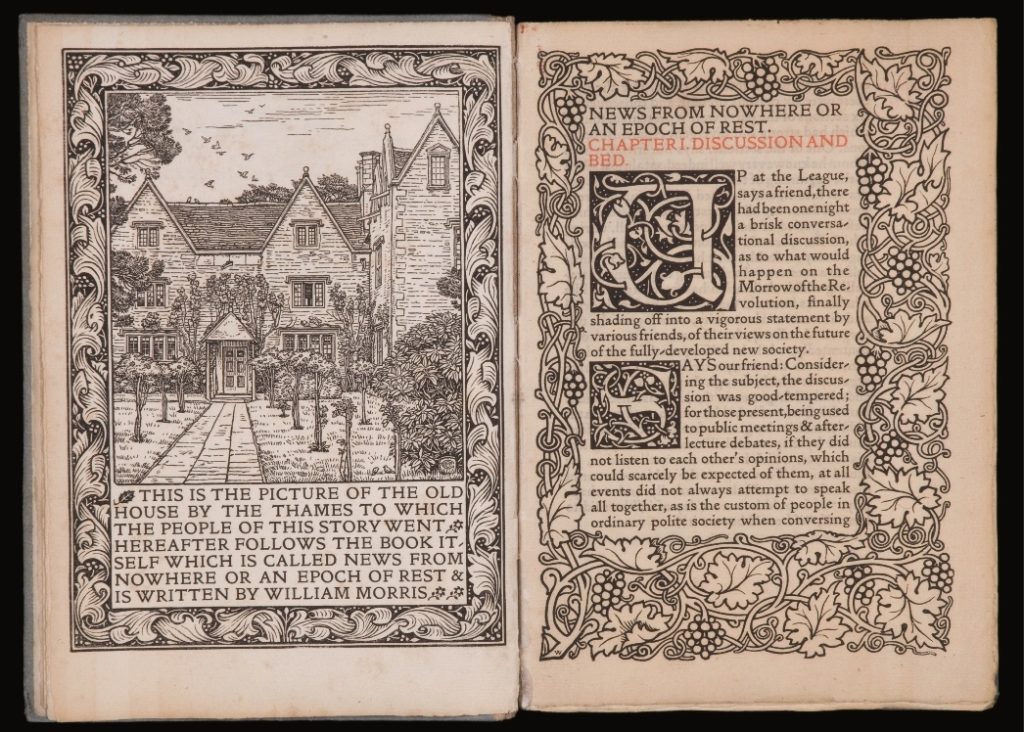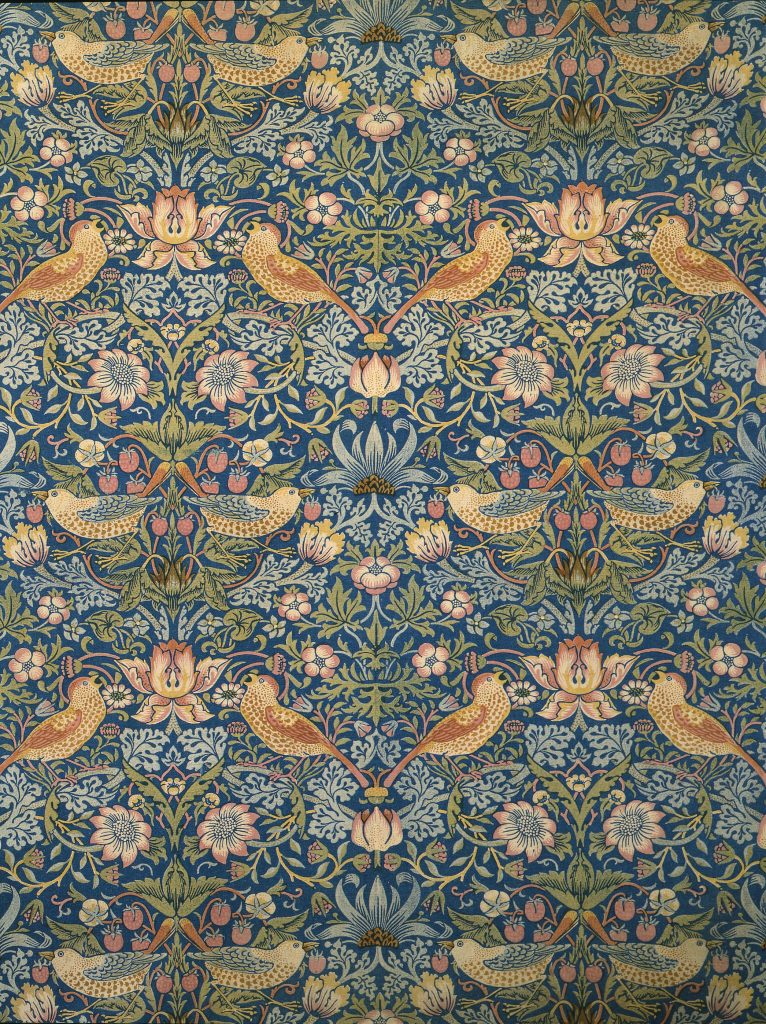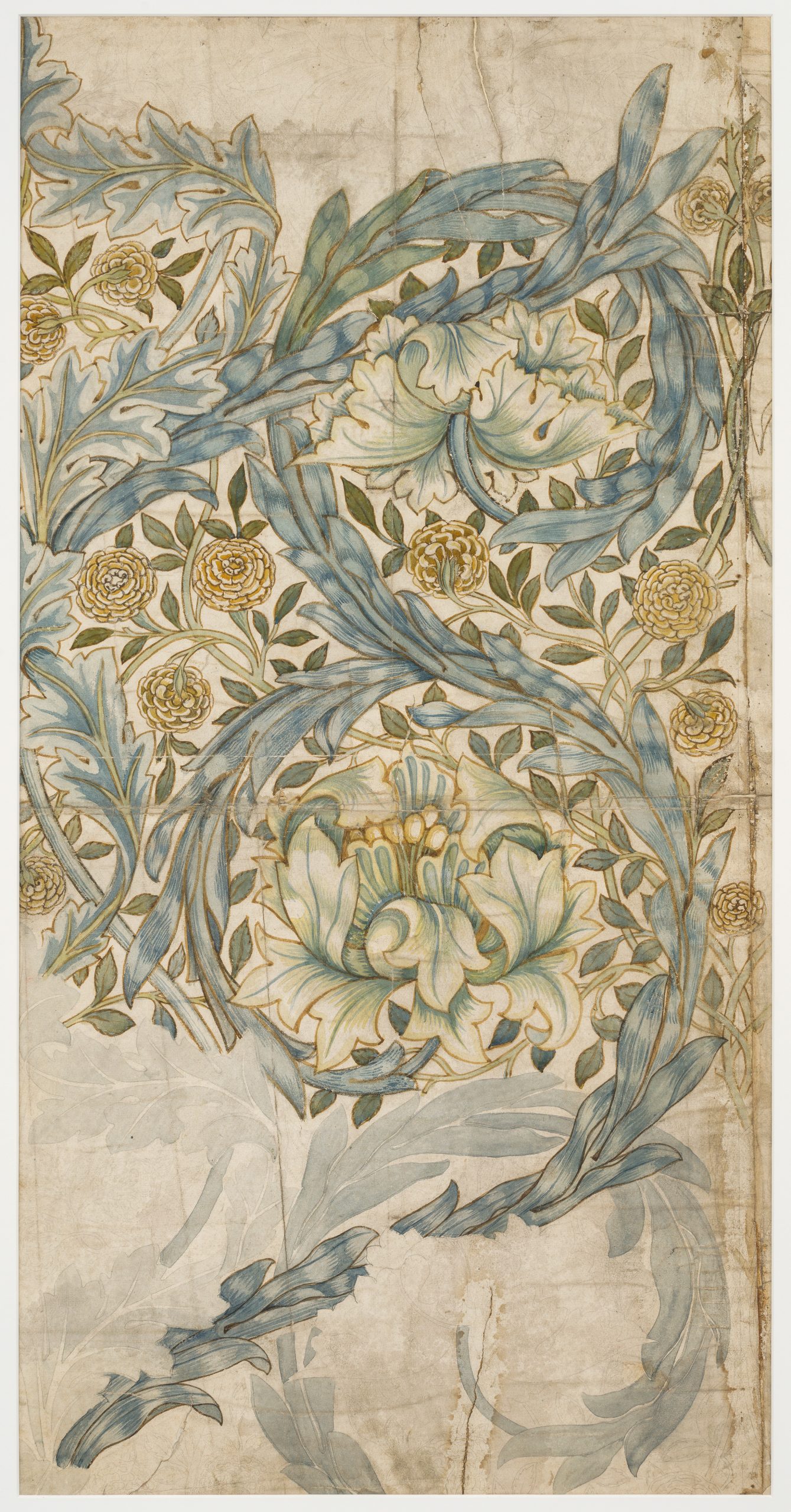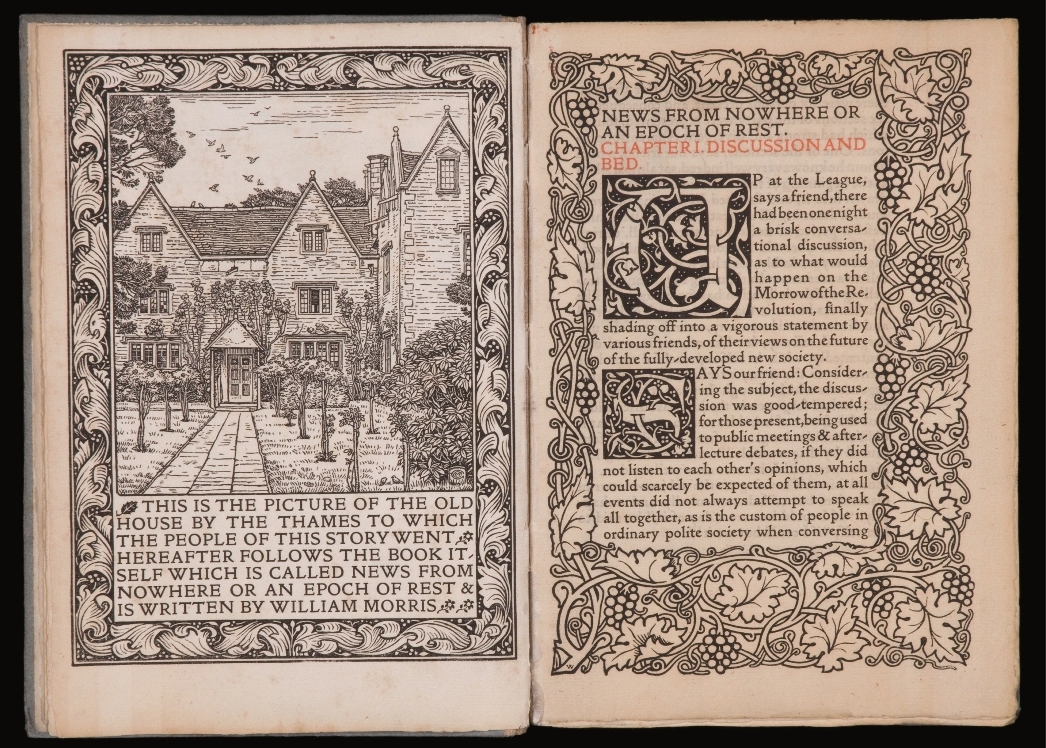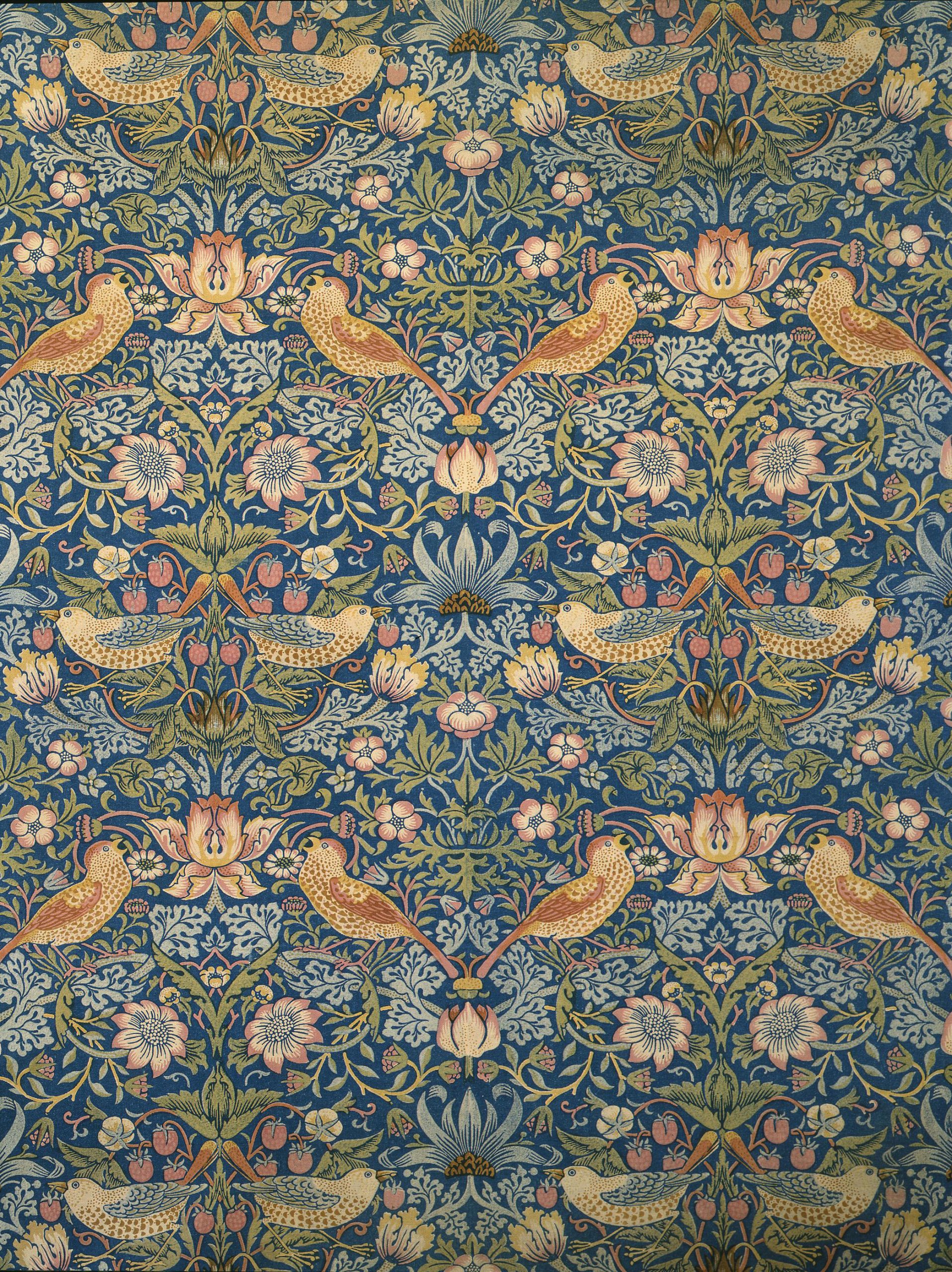William Morris (1834-1896) was a revolutionary designer, craftsman, writer, social activist, and conservationist, who introduced a new and instantly recognisable visual aesthetic into British interiors. Morris pioneered a new and refreshing approach to design and manufacture, championing hand craftsmanship during a time in British history when industrial mass-production was at its peak. From furniture to stained glass and textiles, Morris’s designs have been continuously produced ever since.
No single individual in Britain has had such a lasting impact on the history of British design.
Early Years
Born in Walthamstow, Morris moved to Water House, (the building now home to the William Morris Gallery) in 1848 when he was 14, after the death of his father, a wealthy city financier. Morris went on to attend Oxford University where he developed a fascination with the past, escaping into the world of medieval history and poetry. He shared these passions with a close group of male companions, including his best friend, Edward Burne-Jones (1833–1898). Morris and Burne-Jones were deeply influenced by John Ruskin, art historian and philosopher, and his book The Stones of Venice (1853). In a chapter titled ‘The Nature of Gothic’ Ruskin rejected what he saw as the moral bankruptcy of Victorian art and society, and called for a return to the values of the medieval age. Ruskin’s views resonated with Morris’s rebellious nature and appreciation of the past, contributing to his lifelong belief in the transformative power of art.
Artistic Development: The Pre-Raphaelites and Red House
After University, Morris began an apprenticeship with the Neo-Gothic architect George Edmund Street. Growing tired of architecture, Morris abandoned his apprenticeship and, encouraged by the Pre-Raphaelite artist Dante Gabriel Rosetti (1828-1882), took up painting. Morris aided Rossetti and Burne-Jones in painting the Arthurian murals at Oxford University.
It was during this period that Morris met his future wife, Jane Burden, whom he married in 1859. Soon after, Morris called on his close friend and supervisor from his apprenticeship, Phillip Webb, to design a home for him and Jane. Morris and Webb worked together to design Red House, a medieval inspired home in Bexleyheath that was described by Burne-Jones as “the beautifullest place on earth.” The design of Red House set in motion Morris’s decision to open a decorating firm.
Morris & Co
In April 1861, Morris founded Morris, Marshall, Faulkner & Co., with six partners: Burne-Jones, Rossetti, Webb, Ford Madox Brown, Charles Faulkner, and Peter Paul Marshall. After experiencing initial success, the Firm saw a severe drop in profits due to an economic recession in the late 1860s. As Morris worked hard in the 1870s to develop a more diverse range of products that would appeal to a wider customer base, business began to improve. Hand-printed textiles and comprehensive interior design schemes were sold to rich clients while a range of cheaper products were made for the less well off, such as embroidery kits and simple furniture like the Sussex rush-seated chair based on a traditional country design.
With Morris at the helm, it wasn’t long before he took sole direction of The Firm in 1864, which was renamed Morris & Co. Over the next twenty years, Morris expanded the business, opening an Oxford Street shop and showroom in 1877, a shop in Manchester, and agents across Europe, Australia, Canada and The United States. In 1881, Morris relocated production from Red Lion Square to the former silk-weaving sheds at Merton Abbey, south west London. The new workshops were vastly larger and enabled The Firm to expand into new products and techniques such as tapestry, carpet weaving and natural dyeing of yarns.
International Acclaim
Morris has often been described as a founder of the Arts and Crafts Movement, the most significant art movement in Britain from the 1880s to the end of the First World War.
William Morris’s ideas about the relationship between art and society directly inspired the Arts and Crafts movement which centred on quality, beauty and accessibility. His influence on design has also been felt internationally, inspiring artistic movements in The United States (1890-1916), Europe and Scandinavia (1880-1914) and the Mingei movement in Japan (1926-1945). Key moments in British design history take inspiration from Morris’s legacy, from the Festival of Britain in 1951, to the contemporary resurgence of interest in environmentally-sustainable design.
Morris’s unwavering emphasis on beauty and functionality, on democratic access to good design and his criticism of waste and over-production, continue to shape schools of thought today.
Political Impact
Morris is distinct for the incredible breadth of his activities and the largeness of his vision.
Beyond the field of design, Morris continues to have a wide impact on British cultural life, influencing ideas about social reform, conservation and what it means to live a fulfilling life. For Morris, his art, politics and literature were inextricably linked in his struggle against the industrial age. A leading figure in the early socialist movement, Morris made a lasting contribution to utopian thought through his fiction News from Nowhere which remains in print today. He was also an early contributor to the field of conservation, founding the Society for the Protection of Ancient Buildings that continues to thrive and has a wide educational reach. Morris’ cultural significance can only be truly understood by considering the entire range of his activity.
